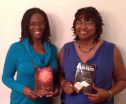Truck Accidents Take a Toll on Florida's Commuters
2013-01-29
Trucks can be dangerous on Florida's roads and streets. Recently, the city of Tampa was considering a settlement in a lawsuit filed on behalf of a child who was seriously injured by a utility truck driven by a city employee.
Child struck by a city truck
In November 2009, a four-year-old was riding his tricycle near his home in unincorporated Hillsborough County. This area receives water service from the city of Tampa, and a meter reader for the city was in the neighborhood to check water meters.
The meter reader was using a city truck and had been out of the truck ...
Even With Homicides Up in Chicago, Evidence Falls Short in Murder Cases
2013-01-29
According to Chicago police officials, the city ended 2012 with a total of 506 homicides. This number represented an increase of 15 percent from 2011. In the first 16 days of 2013, Chicago logged 25 homicides -- on pace to overtake the 40 homicides recorded a year ago in January of 2012.
Yet, even with homicides on the rise, murder convictions are down in the Windy City. Some experts believe that one of the primary reasons is that fewer people have been willing to come forward as witnesses.
Witnesses reluctant to talk to Chicago police
Twenty years ago, the clearance ...
Eyeglasses Retailer America's Best Encourages Cataract Awareness
2013-01-29
America's Best understands that most people only think about their eye health if they can't see or if the need a new pair of glasses. But for people over 50, cataracts may be an issue that can cause a deterioration in vision. Understanding the risks and how to detect cataracts can help people over 50 to protect their vision.
Cataracts are a clouding of the lens of the eye that can be caused by age, exposure to sunlight, certain medications or injury. Some health conditions may also contribute to the development of cataracts. Cataracts are like a filmy haze that cover ...
Atlanta Pest Control Company, Team Pest USA, Encourages Referrals Through Its New Referral Program
2013-01-29
Team Pest USA, an Atlanta pest control company, is pleased to announce that it is now offering money back on services for any customer who refers a new customer through its new referral program.
Existing customers will receive a $100 credit or discount on their current Team Pest USA account when they refer other homeowners who ultimately become Atlanta termite control, pest control and/or wildlife/exclusion customers with Team Pest USA. Customers can submit referrals by filling out a convenient form online or calling the Team Pest USA office at 770-985-4444.
Customers ...
Atlanta Worker's Comp Lawyer Experts, Cummings & Middlebrooks, Manages Twitter Account
2013-01-29
Atlanta workers' compensation attorneys are on Twitter.
If there is one website that has exploded in growth in the last couple of years, it is Twitter. This social media platform has experienced unparalleled expansion since it started just a few years ago. Sites like Facebook and Pinterest are noteworthy competitors, but Twitter seems to be in a league of its own. This is why the Atlanta workers' compensation attorneys at Cummings & Middlebrooks decided to create an account for their business. Specializing in Atlanta workers' compensation law, the firm knew there ...
Project Analyzer Professionals, Steelray, Now Offer Steelray Project Analyzer v3.2
2013-01-29
Steelray Software, a leading project viewer software company, is excited to announce their newest release. Project Analyzer 3.2 is a schedule analysis application that customers can use to create, organize and analyze all of their schedules. According to Brian Leach, CEO of the project viewer firm, "It can be considered a one stop shop for all project schedule quality needs. From start to finish, this is one application you don't want to be without." There are many features in this program that can be used individually or in conjunction with one another. Most ...
Coventry Healthcare of Georgia Provider, McCart Insurance, Suggests Getting Healthy in the New Year
2013-01-29
As we enter the New Year, most of us also take some time to set new personal goals as well as adjust ways of living and thinking that are not benefiting us or our loved ones. By far, the most common New Year's resolution is to lose weight. It's actually become a steady source of income for the health and fitness industries as they prepare for an influx of customers this time each year.
Coventry health Georgia cautions consumers to avoid shortsightedness with their fitness goals and seeking assistance from supplements that promise a 'too much, too fast' approach to weight ...
Los Angeles Data Center Corporate Colocation Inc. Gross Revenue Up 33% Year Over Year Data Center Space Up 25% - Major Network Upgrades
2013-01-29
Corporate Colocation, Los Angeles largest independently owned SAS Type II Data Center continued to thrive and expand in 2012 with new growth centered on the Asia Pacific Market for which it is perfectly positioned on the border of the Pacific Rim.
Top Tier facilities and a proprietary combination of hot air extraction and air side economizing provide a completive advantage, while reducing harmful C02 Output.
Currently Corporate Colocation Inc. occupies over 15,000 Sq. Feet of Data Center Space at 530 West Sixth Street in Los Angeles with additional deployments at ...
LucaSunscreen.com Discusses Safe Options for Promoting Eyelash Growth
2013-01-29
Eyelash growth products have become very popular, and offer attractive results, but most consumers are not aware of the vastly different side effects that can result from various active ingredients. While some newer products have no side effects, there are hormone and prostaglandin analog containing formulations that can permanently change eye color (iris discoloration) and turn eyelids darker. Fortunately, it is possible to avoid the side effects of eyelash growth products and select safe options.
Option 1 (Good)
Latisse is the only product on the market that is dispensed ...
PaySimple Launches Three New Partnerships to Power Member Payment Acceptance for Fitness Centers
2013-01-29
PaySimple, the cloud-based platform for managing and growing small businesses, announced today the launch of three new integrated partners. PaySimple technology now powers the payments, recurring payment plan, invoicing, and financial reporting functionality of three fitness management software systems, including Colorado-based ZenPlanner. The partners built integrations for their software systems through the PaySimple API.
PaySimple's API facilitates the development of custom applications, allowing partners to expand their current product offering and interface to ...
London 2013: Major Museum Highlights
2013-01-29
Priceless jewels, ice age art, Roman remains, Russian riches, 80s fashion, endangered species, a Bowie bonanza and the science behind the Big Bang. This is just a handful of topics covered by the London museum scene in 2013, which promises to be yet another ground-breaking year. LondonTown.com has left no stone uncovered in its new 244-page guide to London 2013, which includes write-ups of all the major museum exhibitions over the next 12 months and an in-depth article about the must-see shows in the capital.
Two blockbuster exhibitions stand out at the British Museum ...
MapsWithMe Hits 1 Million Downloads
2013-01-29
MapsWithMe, debuted in 2011 with the Lite version for iOS, experienced the hockey stick in 2012 by gradually increasing the features set and ultimately releasing the Android version. This year the user base has grown 10 times hitting the 7-digit milestone.
MapsWithMe is a mapping tool designed to make their users' travel experience smoother and safer. The maps themselves along with search, bookmarks and other features operate completely offline and do not require Internet connection. Including the maps of all the countries and cities in the world in one compact app ...
Mother Declares "You Are Already Healed!!!"--Daughter Shares "The Miracle of Hope"
2013-01-29
The uplifting and spirit strengthening books, "You Are Already Healed!!!" by Pastor Carrie Harper Walton and "The Miracle of Hope: The autobiography of Hope Victoria Walton Charles", by Hope V. W. Charles are available for paperback and electronic book readers alike.
The strength of the Walton family's faith led these two women through many potential tragedies that resulted instead in a manifestation of divine miracles. "The Miracle of Hope" is a powerful testament of one women's perseverance through the struggles of life. Written off as ...
Horror Film Theater Launches Campaign to Showcase Horror Videos from YouTube
2013-01-29
If a horror video drops on YouTube and no one watches it, does it make a sound? That's one riddle that's been solved, thanks to MovieScreams.com which curates nothing but horror and sci-fi viral video uploads. And trust me, these deserve an audience.
MovieScreams.com, the worlds first online horror film theater is now screening sci-fi and horror videos, with uploads every week that showcase work by video artist, filmmakers, animators, actors, screenwriters and horror fans around the globe.
"With this online global initiative, we're not looking for what's 'now,' ...
Macef 2013: Italian Architect and Interior Designer Claudio Giuliano Visits the Furniture Exhibition in Milan
2013-01-29
The Macef Fair 2013 opens in Milan on January 24, 2013, the international exhibition of home furnishing, where the Italian architect Claudio Giuliano www.claudiogiuliano.com will be present there to meet the customers, partners, and hold private consultations about the choice of furnishings and designer pieces for home decor.
The fair hosts pavilions for furnishing accessories, interior decorations, designer objects, furniture and equipment for the outdoor decor and silverware for the home. Besides the attractiveness of the fair for what it exhibits, especially the giftware ...
Diego Sanchez, Winner of The First "Ultimate Fighter" TV Show, Endorses Deer Antler Velvet Spray (IGF-1 Plus) from Nutronics Labs
2013-01-29
UFC fan favorite Diego Sanchez is scheduled to fight against Takanori Gomi on March 3, 2013 at UFC on Fuel TV 8. Diego, the first "Ultimate Fighter" TV show winner, has also announced his decision to drop down from welterweight to lightweight, once again.
In order to handle the weight drop and train safely, Diego has committed himself to a rigorous and all natural training regimen, which includes deer antler velvet spray from Nutronics Labs.
Diego Sanchez recently tweeted:
-- "Can't wait to get the best deer antler velvet available in my system"
-- ...
Possible consequences between CaMV 35S promoter regions and viral gene VI in transgenic plants
2013-01-28
The paper "Possible consequences of the overlap between the CaMV 35S promoter regions in plant transformation vectors used and the viral gene VI in transgenic plants" by Nancy Podevin and Patrick du Jardin—published in GM Crops & Food, 3(4), 296-300 (October/November/December 2012)—has this last week become the basis for a public controversy about certain aspects of the safety of foods containing or derived from GM ingredients. It has been pointed out that wider discussion of the issue might be hampered by the fee hitherto levied for downloading this paper.
In order to ...
Altering eye cells may 1 day restore vision
2013-01-28
Doctors may one day treat some forms of blindness by altering the genetic program of the light-sensing cells of the eye, according to scientists at Washington University School of Medicine in St. Louis.
Working in mice with retinitis pigmentosa, a disease that causes gradual blindness, the researchers reprogrammed the cells in the eye that enable night vision. The change made the cells more similar to other cells that provide sight during daylight hours and prevented degeneration of the retina, the light-sensing structure in the back of the eye. The scientists now are ...
CSHL neuroscientists pinpoint location of fear memory in amygdala
2013-01-28
Cold Spring Harbor, N.Y. – A rustle of undergrowth in the outback: it's a sound that might make an animal or person stop sharply and be still, in the anticipation of a predator. That "freezing" is part of the fear response, a reaction to a stimulus in the environment and part of the brain's determination of whether to be afraid of it.
A neuroscience group at Cold Spring Harbor Laboratory (CSHL) led by Assistant Professor Bo Li Ph.D., together with collaborator Professor Z. Josh Huang Ph.D., today release the results of a new study that examines the how fear responses ...
ASU scientists unravel the mysteries of spider silk
2013-01-28
Scientists at Arizona State University are celebrating their recent success on the path to understanding what makes the fiber that spiders spin – weight for weight - at least five times as strong as piano wire. They have found a way to obtain a wide variety of elastic properties of the silk of several intact spiders' webs using a sophisticated but non–invasive laser light scattering technique.
"Spider silk has a unique combination of mechanical strength and elasticity that make it one of the toughest materials we know," said Professor Jeffery Yarger of ASU's Department ...
Singapore scientists led by A*STAR's GIS identify 4 mechanisms that contribute to gastric cancers
2013-01-28
Scientists at A*STAR's Genome Institute of Singapore (GIS) headed a study that discovered four processes by which gastric cancer is formed. This is extremely important since gastric cancer is the second most common cause of cancer deaths worldwide, claiming almost 750,000 lives annually, 60% of which are Asians.
Using what is known as next-generation sequencing technologies, GIS scientists were able to provide a comprehensive view of the gastric cancer genome, characterizing micro- and macro-scale mutations. This led to the identification of four distinct processes that ...
Dual-hormone artificial pancreas is a step closer for patients with Type 1 diabetes
2013-01-28
For patients with type 1 diabetes, a dual-hormone artificial pancreas system (also known as a closed-loop delivery system) improved the control of glucose levels and reduced the risk of hypoglycemia compared with conventional pump treatment in a trial published in CMAJ (Canadian Medical Association Journal).
It is challenging for patients with type 1 diabetes to control their glucose levels because tight glucose control increases the incidence of hypoglycemia (dangerously low glucose levels). Insulin pump treatment, which provides a continuous predetermined subcutaneous ...
Clinical trials with nonblinded outcome assessors have high observer bias
2013-01-28
A new study of randomized clinical trials found significant observer bias toward a more beneficial treatment effect in nonblinded trials when the researcher knew the treatment being given to the participant. The study is published in CMAJ (Canadian Medical Association Journal).
"Nonblinded assessors of subjective measurement scales outcomes in randomized clinical trials tended to generate substantially biased effect sizes," writes Dr. Asbjørn Hróbjartsson, The Nordic Cochrane Centre, Rigshospitalet Department, Copenhagen, Denmark, with coauthors.
Danish and French researchers ...
Blood pressure, cholesterol most important indicators of heart disease risk in diabetics
2013-01-28
PORTLAND, Ore., January 28, 2013—For people with diabetes, meeting the recommended guidelines for blood pressure and cholesterol is even more important than meeting the guidelines for blood sugar control in reducing the risk of heart attack or stroke, according to a new Kaiser Permanente study published today in the Journal of General Internal Medicine.
The study included more than 26,000 patients with diabetes. Patients who met guidelines for all three risk factors and those who met the blood pressure and cholesterol guidelines were least likely to be hospitalized for ...
Treating constipation in seniors: A review of current treatments
2013-01-28
For seniors who are constipated, the use of polyethylene glycol and lactulose are effective, according to a review of current treatments published in CMAJ (Canadian Medical Association Journal). The article reviews the latest evidence on the efficacy and safety of treatments to help doctors treat their patients.
Constipation, which increases with age, is a common complaint in seniors that can have serious health consequences and affect quality of life. Excessive straining in frail people can cause fainting and the risk of injury from falling or restrict blood flow to ...
[1] ... [5184]
[5185]
[5186]
[5187]
[5188]
[5189]
[5190]
[5191]
5192
[5193]
[5194]
[5195]
[5196]
[5197]
[5198]
[5199]
[5200]
... [8709]
Press-News.org - Free Press Release Distribution service.









